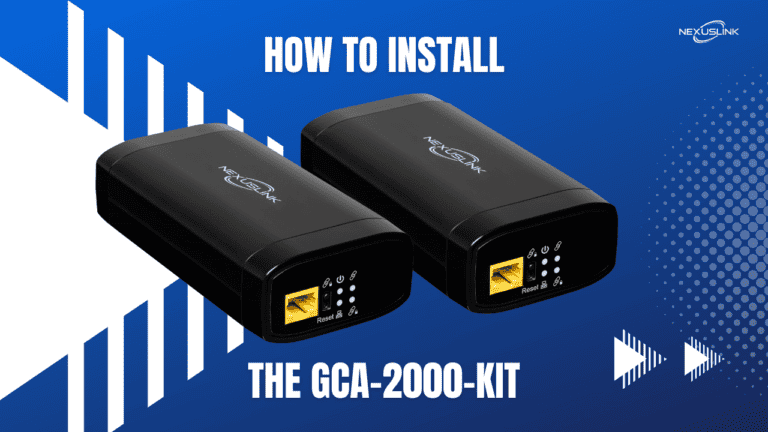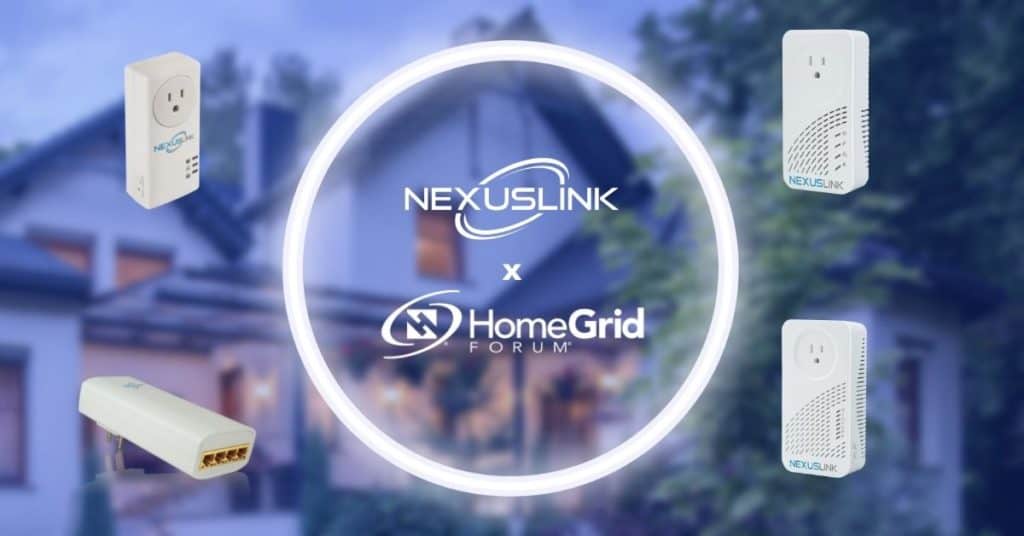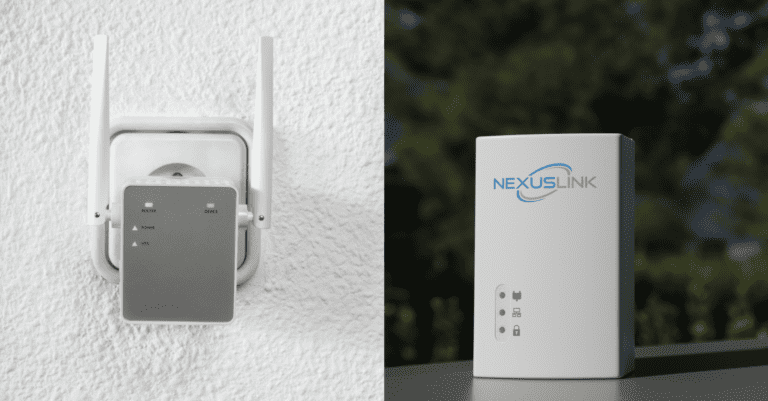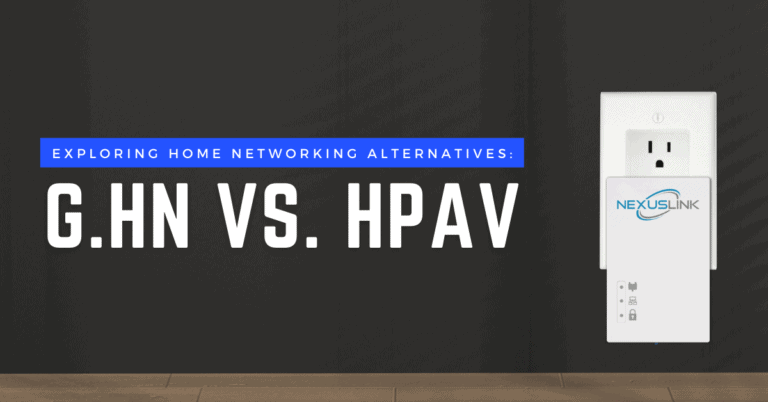
Home / NexusLink, Powered by G.hn Technology

Good Day Fellow Internet Travellers,
In this short article we’re going to talk about a largely unknown technology called G.hn POWERLINE networking. Technology experts know that it’s been around for more than a decade, but not the rest of us. During this time, some very smart people made it better, easier, and less expensive. In the past it was perceived to be competing in the home network arena with your wireless, but it turned out to offer a robust backbone for enhancing its performance. To know how it can make your well-networked life better, we’ll briefly cover how it works, how it became so good, and why you’ll choose it now that you’ve been enlightened.
Let’s start with the basic assumption- you have devices in your home that you want to connect to your router that, sadly, are not sitting next to said router. It appears your only choice is to use wireless, so let’s fix that.
So you connect it wirelessly to the router or attempt to, but for some reason, you cannot connect, you connect poorly, or even worse, intermittently. There are many factors to blame… wireless congestion, building or wall construction and materials, frequency disturbers, and a dozen more.
With perfect hindsight, your homebuilders could have installed Ethernet connections to every part of the house, or office, next to each future device’s location. And likewise, they could have chosen to use building materials and wall angles for optimal wireless penetration on both 2.4 and 5.0 GHz frequencies.
Now if this perfect planning did not happen, we have a solution rather close to the ideal… as your home already has the necessary wires in almost every wall in the house – the electrical network. Enter: POWERLINE networking – giving you the convenience, stability, security, and low latency of the wired Ethernet network you wanted in the first place.
The next big question: “Isn’t the electricity going to disrupt the network connections?”
No, or ‘mostly No’. Engineers discovered how to use the same medium for multiple purposes simultaneously with little to no interference. Historically, this was a problem to be accommodated. More on that soon, but the bottom line here is that with adapters on both outlets, a short Ethernet cable will run from each adapter to its device (for example the router and the TV). Like an Ethernet network running through your house, every power outlet can become an Ethernet port. Again, why? Answer: wired connections are stable, penetrate walls without a care to their construction material, and can’t be hacked by a neighbor wanting to share your Internet, a common wireless concern.
Why trust this technology? You will be surprised at how far this developed while you weren’t looking these last ten+ years.
Yesterday vs. Today
So, here’s how it began; about 15 years ago, the HomePlug Powerline Alliance had a single goal which was to create a standard that would use existing home electrical wiring to communicate between devices and connect them to the internet.
As a result, HomePlug Alliance developed standards like HomePlug 1.0, HomePlug AV, and HomePlug AV2.
These standards had a family name, “HomePlug” coined from HomePlug Powerline Alliance which was developed for applications such as in-home distribution of TV (connectivity), internet access, and gaming.
And after nearly 16 years, the HomePlug Alliance announced that all of its specifications will be available to the public and that other organizations could continue with the development and deployment of related technologies.
In parallel, the International Telecommunication Union‘s Telecommunication Standardization Sector ( ITU-T) developed a new specification (G.hn) extended for any wires (covering powerline but also coax, telephone wires and plastic optical fiber – POF). Additionally, ITU-T also enhanced the powerline technology by implementing the multiple input, multiple output (MIMO) feature to significantly increase data rates and coverage.
Furthermore, in order to accelerate robust connectivity deployments, service providers together with silicon vendors and system vendors created the HomeGrid Forum, an industry alliance that took on the responsibility through a continuous effort to improve the user experience and easy installation of networks, leveraging on any wire capabilities.
That’s not all.
HomeGrid Forum took it a step further by creating a program called “HomeGrid Forum certification testing”, designed to ensure that all available products comply with (ITU-T) G.hn standards and the HomeGrid requirements pertaining performance and interoperability, as specified in the HomeGrid Forum Certification Test Plans.
Due to the uniqueness of the technology, G.hn works on many different mediums and creates a category unto itself. There had never been an organization that took on coax, powerline, twisted pair, and plastic fiber before. HomeGrid Forum does this and continues to provide unending support and development for the technology. They have created a community to foster the growth and development of G.hn and expand it to areas undreamt of… would you have thought that electrical cars would use their own wired network for power and data connectivity? It’s the newest application of Power over Ethernet (PoE).
G.hn experts have been continuously updating the technology with new amendments to the original standard as proof to their undying commitment to meet the growing demand for Over-The-Top (OTT) services, such as on-demand video streaming, and robust in-home networks that combine wireless and wired technologies for improved performance.
So, how does it make your life better? Let’s find out below!
Impact on You
Manufacturers, such as NexusLink, have recently released products with HomeGrid Forums’ latest G.hn technology. This means that with the cutting-edge technology of the recent powerline standards, you can add a pair of adapters to a home network within minutes. Your home and office networks get less wireless congestion (which your wireless devices will appreciate) and instead provide a robust wired backbone without installing Ethernet.
Some people have actually experienced buffering and slow load times while streaming video with older powerline technologies… They didn’t know about G.hn but would have appreciated the new G.hn technology feature that includes a “neighbor protection” mechanism, ensuring a delay-free OTT (Netflix, YouTube, PrimeVideo, HBO+, IMDb, and others) experience.
There are a plethora of options through G.hn technology. To touch on this new world of opportunities, you can build on G.hn backbone for adding other technologies, like:
Wireless: since you can’t (and don’t want to) connect your tablet to Ethernet, make use of an embedded wireless access point in your Powerline adapter for an unobstructed connection in any room.
Power over Ethernet: this is an established technology in the IT industry that consumers are just beginning to implement… the powerline adapters supply both internet access and power through one Ethernet cable to certain devices, like PoE cameras, VoIP phones, or a network switch.
And now you know; this is how G.hn just [potentially] made your life better.



